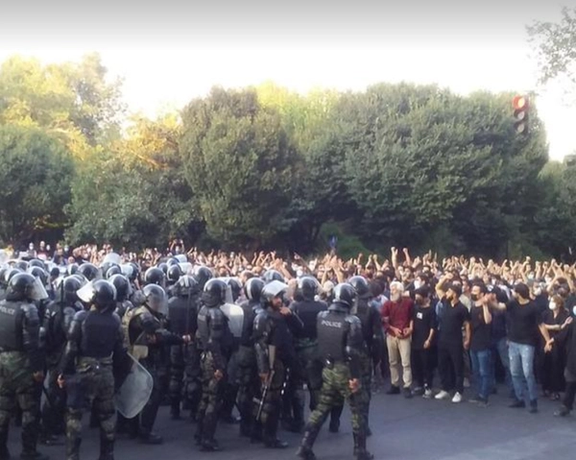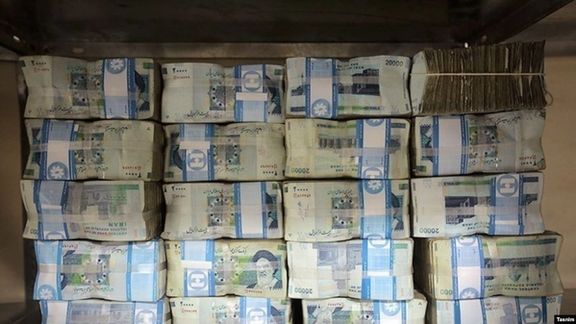Is Iran’s real sedition from the streets or the top?

In his Eid al-Fitr sermon, Ali Khamenei once again voiced concern about the possible resurgence of anti-government protests in Iran, using his signature rhetoric to warn of a "new sedition."

In his Eid al-Fitr sermon, Ali Khamenei once again voiced concern about the possible resurgence of anti-government protests in Iran, using his signature rhetoric to warn of a "new sedition."
But the fundamental question remains: who is the real seditionist? Is it the Iranian people protesting the country’s dire conditions—or is it Khamenei himself, who has held power for over three decades? Who is responsible for the current state of affairs that has him so worried? Who has ruled the country and made all major decisions over the past 36 years—ordinary citizens or Khamenei himself?
Khamenei labeling public protests as "sedition" and dismissing demonstrators as seditious is nothing new. This has always been his approach. He has never been willing to acknowledge that Iranian citizens are reacting to the country's deteriorating conditions, which are a direct result of his policies as supreme leader. He has consistently refused to recognize these protests as legitimate, branding them as riots in order to justify their suppression.
He views the citizens who took to the streets in dozens of cities during the 2017, 2019, and 2022 uprisings as being influenced by foreign enemies. But is this really plausible? Khamenei refuses to accept that these protests are domestic and popular in nature. He uses the label of unrest to delegitimize them.
If Khamenei is worried about new protests, he should understand that this fear stems from his own actions. The country’s current state—one that the majority of people reject—is the product of 36 years under his rule, and a decade before that under Khomeini.

For 46 years, no one else has governed Iran. Even the monarchy, which the Islamic Republic continues to criticize and compare itself to, fares better in many metrics. In contrast, the Islamic Republic has dragged the country backward.
After 46 years in power, it is no longer acceptable for the Islamic Republic to measure itself against a government from half a century ago. And even when this comparison is made, in the minds of many Iranians, the Pahlavi era wins, while the Islamic Republic is clearly the loser.
While other nations have advanced in less time, Iran under the Islamic Republic has stagnated or regressed. Dubai and Qatar have achieved modern prosperity in under 46 years. China, now an economic superpower, began its development path after the Islamic Republic came to power—but unlike Iran, it made real progress. The Islamic Republic squandered these decades, pushed the country into ruin, and sacrificed three generations in the process—yet refuses to step aside. Meanwhile, those who object to these conditions are called seditious.
When Khamenei assumed power in 1989, the exchange rate was 1,200 rials to the US dollar. After 36 years of his leadership, it has surpassed one million—a depreciation of 87,000 percent. This isn't mere exaggeration; it’s verifiable with a basic calculation. And still, he labels public protests as sedition and threatens suppression—though such threats have long lost their force.
In just the past four years, the dollar has surged from around 200,000 rials to 1,040,000—more than a fivefold increase. So why wouldn’t people expect the currency to plunge further, possibly hitting one billion rials, if the current trajectory and war-driven policies continue?

Given this economic collapse—and the fact that widespread poverty and dissatisfaction are direct consequences of Khamenei’s rule—how can he possibly justify calling protesters seditious?
Even some of Khamenei’s own allies, like former deputy parliament speaker Mohammadreza Bahonar, have admitted that inflation has hovered at 40 percent for the past seven years. Inflation, in essence, is a legalized form of theft by the state—citizens go to sleep at night and wake up to find their savings eroded.
Even former president Hassan Rouhani, a figure deeply entrenched in Iran’s security apparatus, has openly stated that the people are unhappy.
When individuals who played key roles in cracking down on the 2017 and 2019 protests now speak of widespread dissatisfaction, how can Khamenei still claim these movements are foreign-led?
Many Islamic Republic officials have warned that the public will once again take to the streets—an outcome of the government’s own policies. If anything needs to change, it is the behavior of those in power, not the people.
Numerous insiders have acknowledged the failures of the Islamic Republic’s domestic and foreign policies, especially regarding the US and Israel. Khamenei and the Revolutionary Guard’s staunch anti-American and anti-Israeli stance has not only devastated the economy but also edged the country closer to a potentially catastrophic war.
Sanctions, largely driven by Tehran’s belligerent foreign policy, have primarily harmed ordinary Iranians—while enriching commanders of the Revolutionary Guard.
Mohammad Hossein Adeli, a former Central Bank governor, revealed that in just one year, efforts to circumvent sanctions—managed by the Revolutionary Guard—cost the country $50 billion.
Where did that money go? Beyond international middlemen, much of it ended up in the hands of IRGC commanders and oil smuggling networks. They call it “bypassing sanctions,” but in practice, it’s looting the nation while claiming sacrifice and heroism.
Naturally, the Guard will seek to protect this $50 billion racket—so it continues echoing anti-American policies. After all, it’s the people who pay the price, not the IRGC.
The reality is that through flawed domestic and foreign policies, the Islamic Republic has pushed Iran into a full-blown crisis. Public frustration and anger towards the ruling system is undeniable. The responsibility for this crisis rests squarely on Ali Khamenei and the government he leads.
Ultimately, public protests driven by economic collapse, corruption, and authoritarianism cannot be ignored—and they will inevitably erupt again. But the core question remains: in a country where even officials acknowledge the people's dissatisfaction, who is the real source of sedition—the people, or Ali Khamenei?